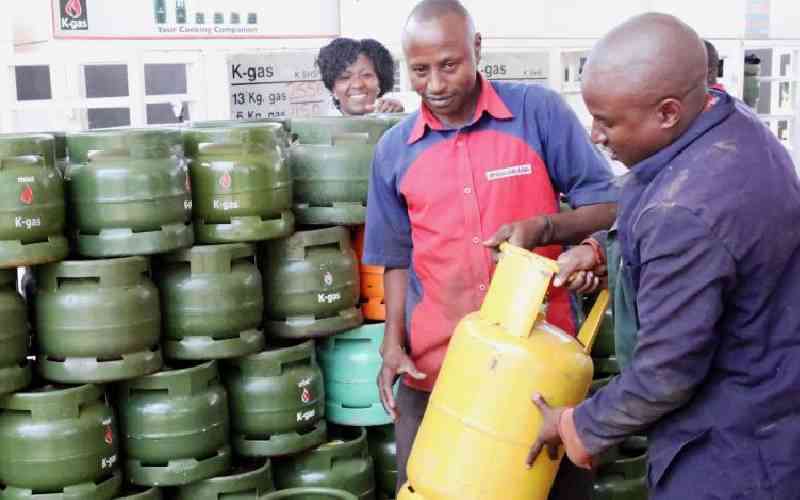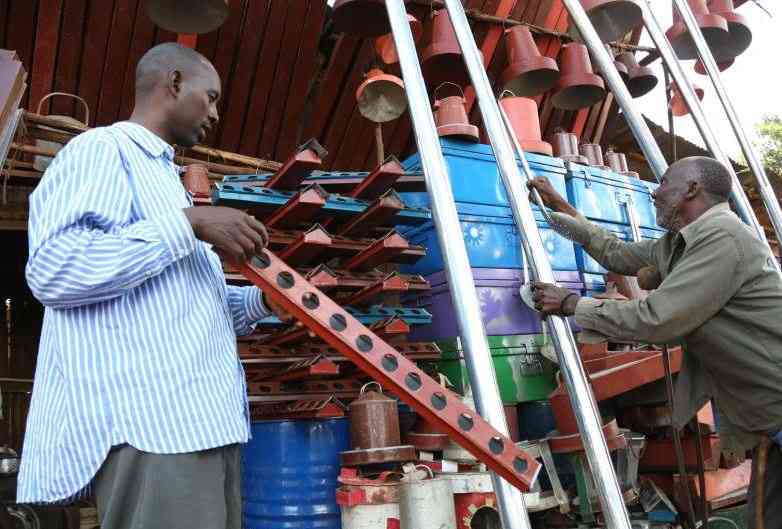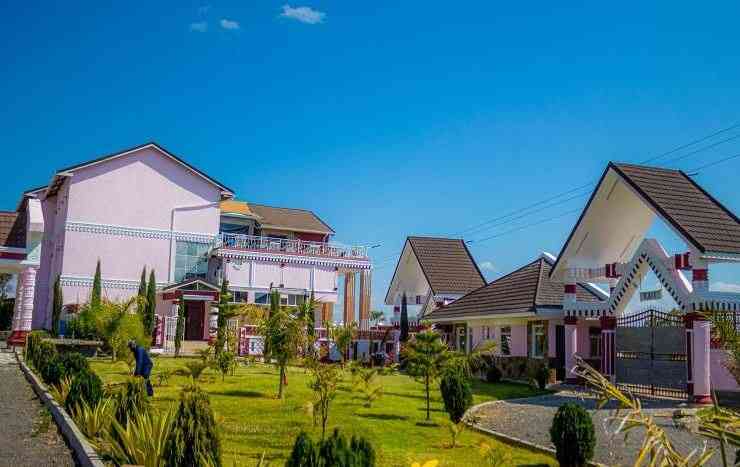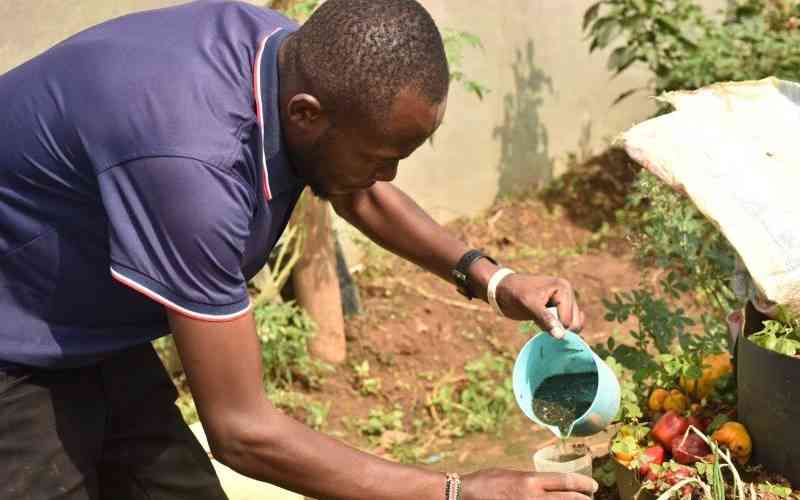
In the quiet outskirts of Bungoma town at Sinoko village, where the sun filters through banana leaves and the soil is rich with promise, a quarter-acre plot is transforming the land and lives too.
At the centre of this green revolution is 31-year-old Brian Okeyo, a trained civil engineer who traded in his hard hat for a hoe and never looked back.
As one steps closer to his small farm, the air feels different, and there is a rich scent of earth and growth.

Bell peppers—red, yellow, and green—burst from planting bags arranged in neat rows across the farm.
These vibrant vegetables are more than a crop; they are the lifeblood of Okeyo’s venture and a testament to what determination and innovation can achieve on limited land.
Standing on his small farm surrounded by vibrant green leafy vegetables and rows of colourful bell peppers, Okeyo doesn’t look like your typical farmer, but his journey is anything but ordinary.
“I always loved engineering, but I realised my real passion was in building something more sustainable—starting with the soil, something that addresses climate change and at the same time provides healthy food solutions to the people around me,” he says, holding a handful of rich, dark compost.
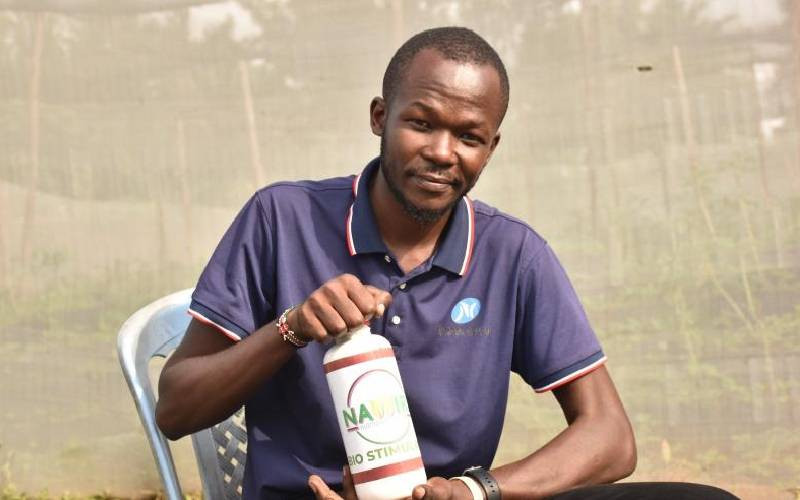
Okeyo says he has always felt the need to decipher the notion that agriculture is a practice of the old people and to demonstrate to young people that agribusiness is the future, if done properly.
“Farming is no longer a last resort,” he says with a smile. “It’s a frontier for innovation. I may have left engineering, but I’m still building. This time, it’s for healthier communities and a cleaner planet.”
After graduating with a degree in civil engineering, Okeyo spent three years working on road construction projects across western Kenya.
But the pull of home, and a growing concern about food security and environmental waste, brought him back to Bungoma with a mission: to merge innovation with agriculture.
What started as a backyard experiment has now grown into a model of sustainable farming. Using leftover vegetables, eggshells, banana leaves, and fish waste, Okeyo crafts a potent organic fertiliser.
Stay informed. Subscribe to our newsletter
The secret ingredient? Waste produced by red wigglers, a type of earthworm known for its powerful composting ability.
“The worms eat through organic waste and produce vermicompost that is rich in nutrients,” Okeyo explains.
“I blend it with other household and farm leftovers to make a fertiliser, which revives the soil and helps crops grow faster and healthier. We also do anaerobic composting of fish waste and seaweed. This ensures that our organic fertiliser has all the required five micro elements and eight macro elements, and growth hormones for plant development.
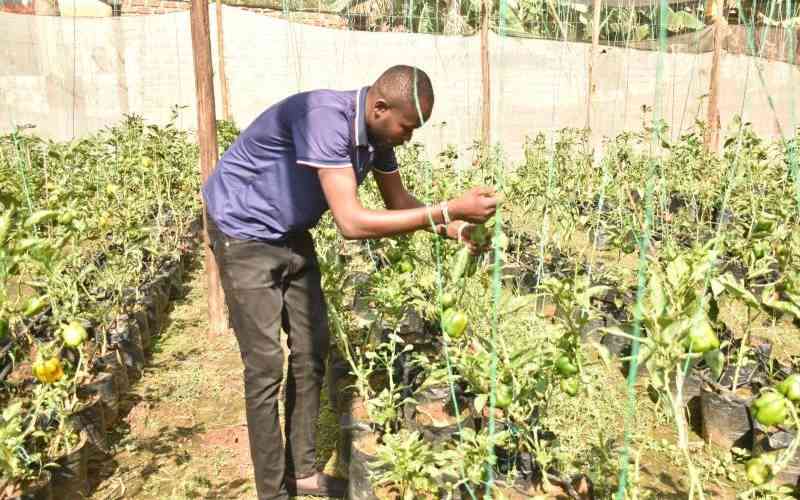
“My concoction is a chemical-free blend that rejuvenates the soil and supports healthy plant growth. It’s completely natural and safe. You can harvest and eat the crops on the same day you apply it with no risk of chemical contamination.”
The Nawiri fertiliser can be applied through drenching directly to the roots or sprayed as foliar on the leaves.
“By use of organic fertiliser, farmers control the amount of nitrogen that goes into the soil and, therefore, ultimately the acidity of the soil as concentrated nitrogen releases ammonia which sublimes into the atmosphere in the form of ammonia gas that is one of the harmful gases causing global warming,’ says Okeyo.
Initially, he practised conventional farming, but after conducting extensive research, he transitioned fully to organic methods. This switch significantly reduced their production costs and dependency on agrochemicals.
“The chemical fertilisers have been proven to be harmful when used in excess, with the increased cancer cases. I saw it fit to go fully organic as a way of producing chemical-free foods that won’t harm my clients in any way, “he explains.
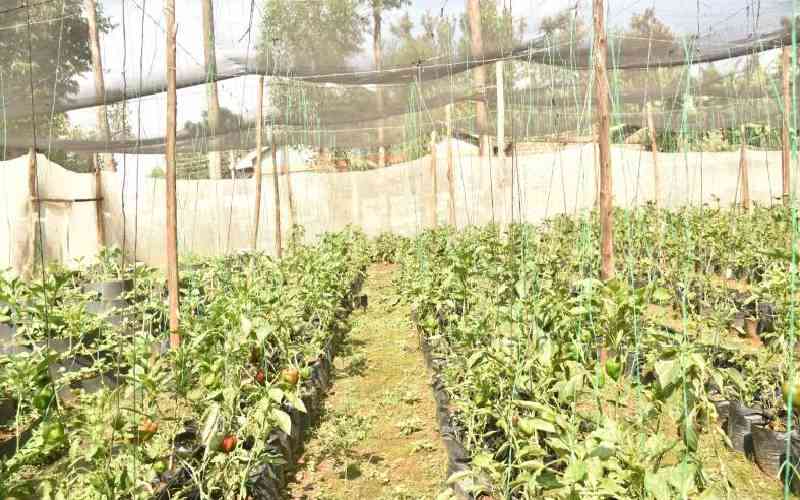
Okeyo further note that too much use of inorganic chemical fertiliser has resulted in increased acidity in most farms, which reduces production.
“Soil acidity has become a menace in our farms. I encourage farmers to embrace soil testing to know what exactly their soil is missing to know what to feed it,” he says.
The young engineer explains that most farmers just add fertiliser to their farms without proper understanding of what nutrient is insufficient.
In addition to enriching the soil, Okeyo also practices integrated pest management. He has planted coriander and spring onions along the perimeter of his farm.
“Coriander attracts ladybugs that feed on harmful pests, while spring onions repel insects like caterpillars,” he explains. This natural pest control method reduces the need for chemical pesticides.
“Nature has its own solutions,” he says, pointing to a cluster of ladybugs perched on a coriander stem. “You just have to pay attention.”
With climate change threatening traditional farming methods, Okeyo’s approach offers a glimpse into the future of agriculture—one that works in harmony with the environment while ensuring food security and income.
To maximise space, especially in the limited area available, Okeyo has embraced vertical farming through conical gardens.
These upright garden structures allow him to grow leafy vegetables like managu, kunde, sagaa, kale, and spinach.
“I am proving that you don’t need acres to farm. With vertical farming, even someone in an urban apartment with a balcony can grow their own food,” he says.
The farm is powered by simple, cost-effective tools—solar panels, a water tank, drip irrigation pipes, a shade net, and a shallow well—forming the backbone of his climate-smart agriculture system.
The shade net helps regulate temperatures and protect crops, especially the colored bell peppers, from pests and the sun’s UV rays, while drip irrigation conserves water by delivering it directly to plant roots.
“I settled on planting bell peppers commercially since they require little attention, unlike other horticulture crops like Tomatoes. Pepper has minimum pest attacks and can survive under harsh conditions,” says Okeyo.
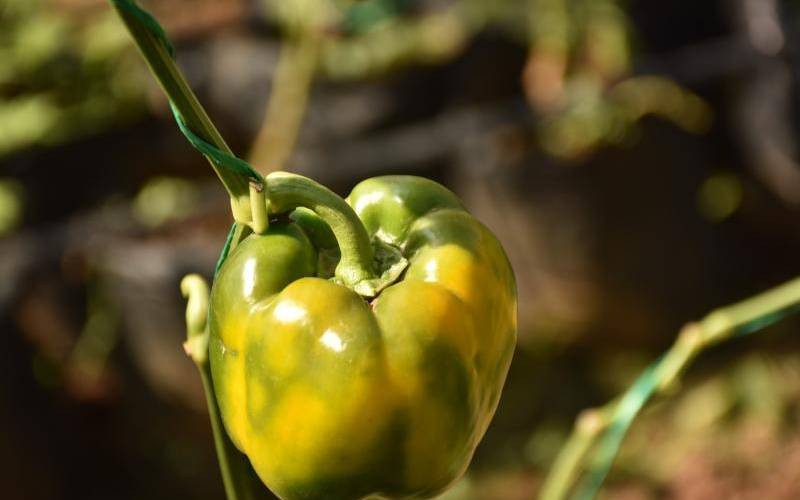
These bell peppers have a life span of eight months and are harvested every week once they bloom.
“Harvesting starts three months after planting, and henceforth I harvest weekly with a consistent bumper returns until they hit eight months is when their production reduces,” says Okeyo
With monthly earnings exceeding Sh80,000, the young engineer of Sinoko village is rewriting the narrative of youth and agriculture in Kenya.
He notes that nothing goes to waste on his farm. Besides recycling waste vegetables into manure also does value addition to whatever product he plants.
“We only sell grade one and two, the best of our produce, and for grade three and four, we do value addition where we make spices from the coriander and the different peppers into paprika. We also make ground tomatoes, which are dried them ground into a fine powder, and also our leafy vegetables are dried and preserved,’ says Okeyo.
Despite his success, Okeyo notes a few challenges, particularly in meeting high market demand.
“I can’t even satisfy five per cent of our customers yet,” he admits.

